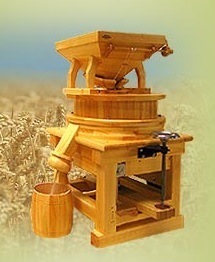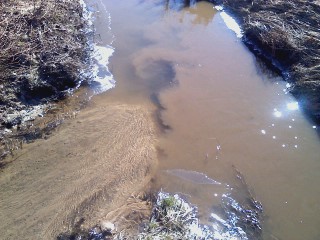Hi there... Amy the baker here.
Customers often ask, "Why the Austrian flour mill?" A great question with great answers! We love to tell the story of today's modern technology... and tracking numbers. My dear husband was able to track our flour mill from Austria, to Germany, across the English Channel, across the Atlantic Ocean to the East Coast... and finally to Virginia. We were even able to see a photo of the transporting ship! Each day we checked online to see the movement of the mill. It was almost as if we were waiting and watching for a long lost family member. You can imagine the thrill when the crate was finally in our store, and the mill was unpacked. But why all this fuss?
Well, there are a few reasons. We had learned that commercial American made mills milled the flour at such high rates of speed, American bakers had to wait to use the flour until it cooled down... even waiting until at least the next day! Red flags flew up in our minds when we learned this. We knew that the longer flour stays around to oxidize, the more nutrients are lost. Hot flour cannot be used in dough because it will kill the yeast. The initial high heat to the flour also burns up nutrients during the milling process. This model just did not fit our paradigm of correct milling for our all natural whole grain breads.
So... again my I'net savvy husband went searching... and he found it! An Austrian, stone ground mill that was made to mill cool flour. (Really cool, 'eh?!) The stones inside have a slow revolution rate per minute, unlike American made mills. The flour comes out cool to the touch. This guarantees optimum flour quality. Dear hubby mills the flour and within minutes that flour is into my dough! THAT's why I love the fact that we were able to bring in this beautiful Austrian mill.
Come see it! You may even purchase some COOL flour for your own homemade baked goods. :-)
We mill COOL FLOUR!!!
Customers often ask, "Why the Austrian flour mill?" A great question with great answers! We love to tell the story of today's modern technology... and tracking numbers. My dear husband was able to track our flour mill from Austria, to Germany, across the English Channel, across the Atlantic Ocean to the East Coast... and finally to Virginia. We were even able to see a photo of the transporting ship! Each day we checked online to see the movement of the mill. It was almost as if we were waiting and watching for a long lost family member. You can imagine the thrill when the crate was finally in our store, and the mill was unpacked. But why all this fuss?
Well, there are a few reasons. We had learned that commercial American made mills milled the flour at such high rates of speed, American bakers had to wait to use the flour until it cooled down... even waiting until at least the next day! Red flags flew up in our minds when we learned this. We knew that the longer flour stays around to oxidize, the more nutrients are lost. Hot flour cannot be used in dough because it will kill the yeast. The initial high heat to the flour also burns up nutrients during the milling process. This model just did not fit our paradigm of correct milling for our all natural whole grain breads.
So... again my I'net savvy husband went searching... and he found it! An Austrian, stone ground mill that was made to mill cool flour. (Really cool, 'eh?!) The stones inside have a slow revolution rate per minute, unlike American made mills. The flour comes out cool to the touch. This guarantees optimum flour quality. Dear hubby mills the flour and within minutes that flour is into my dough! THAT's why I love the fact that we were able to bring in this beautiful Austrian mill.
Come see it! You may even purchase some COOL flour for your own homemade baked goods. :-)
We mill COOL FLOUR!!!


 RSS Feed
RSS Feed
